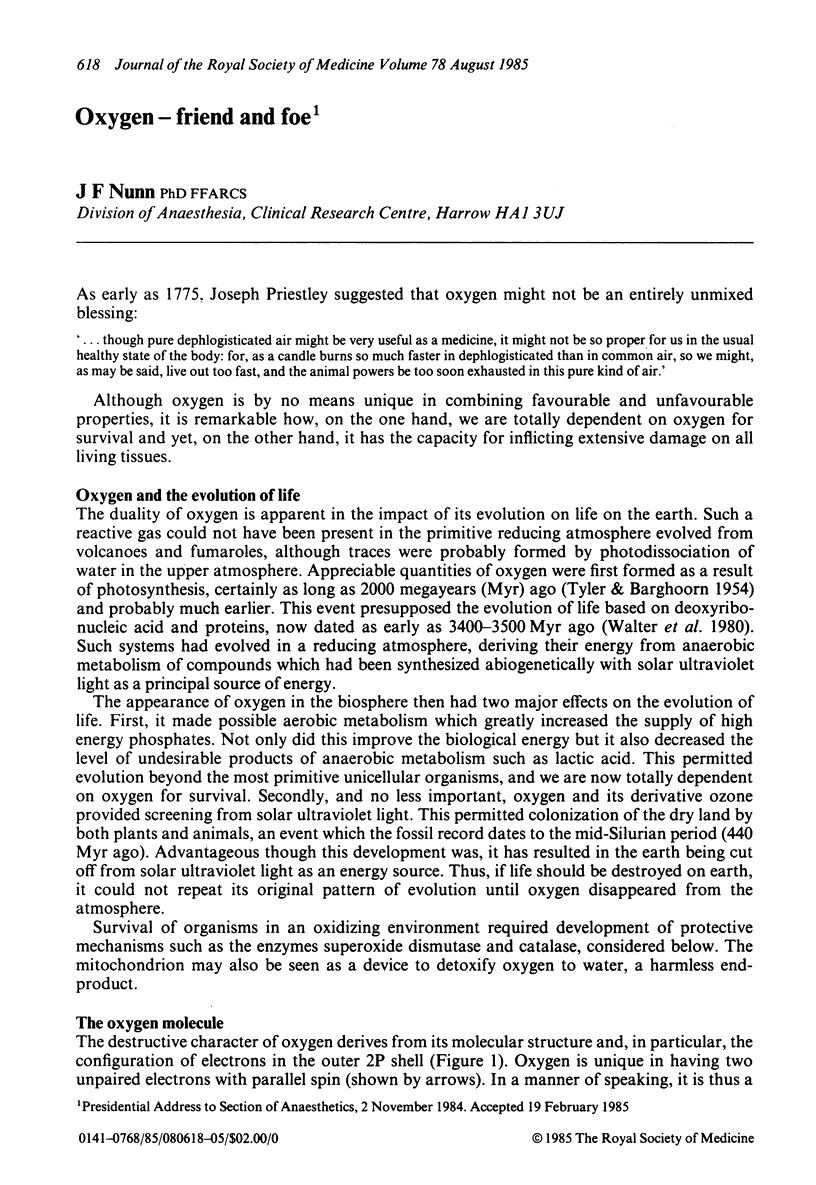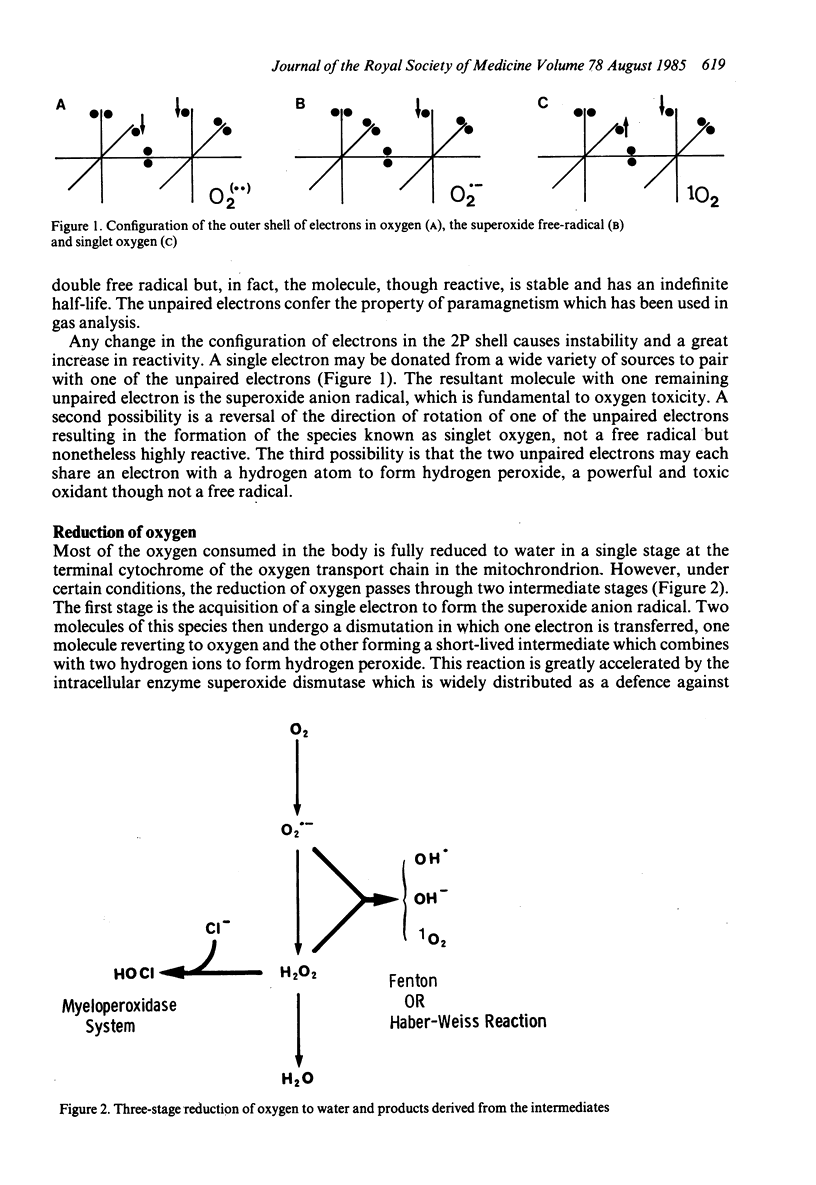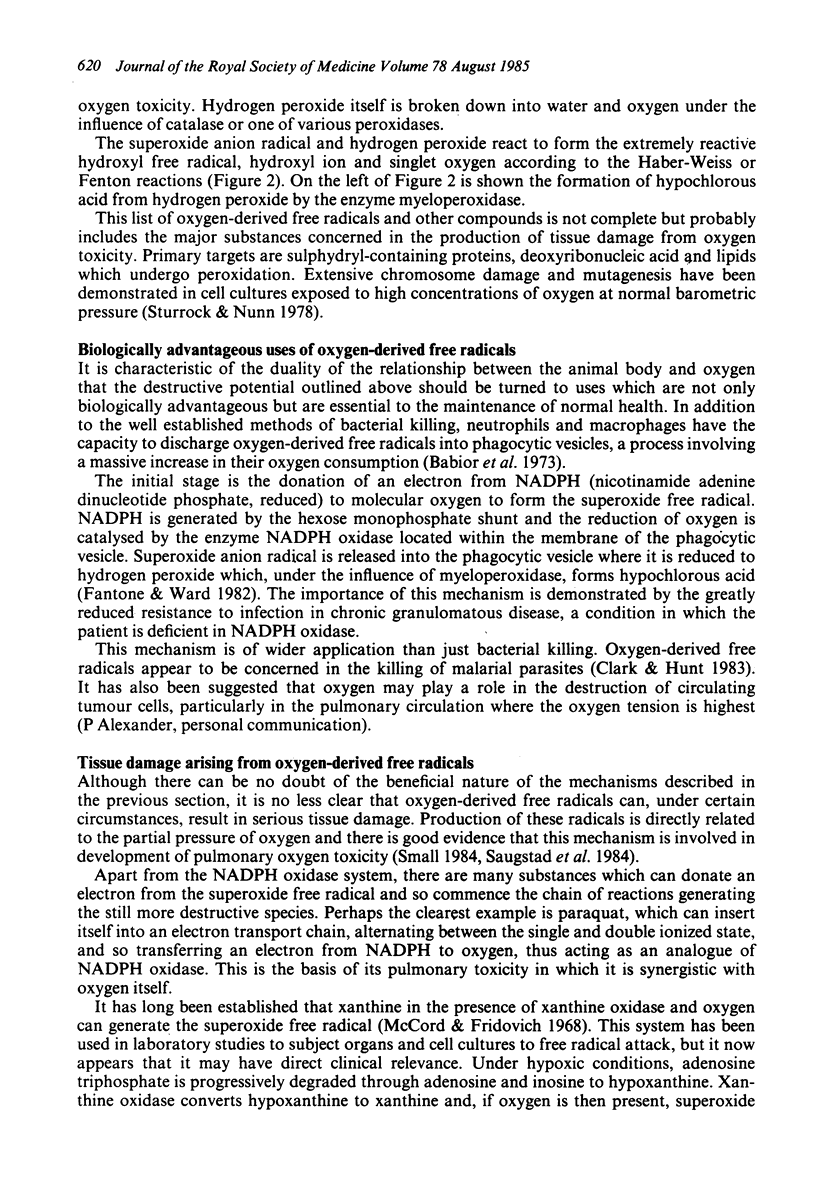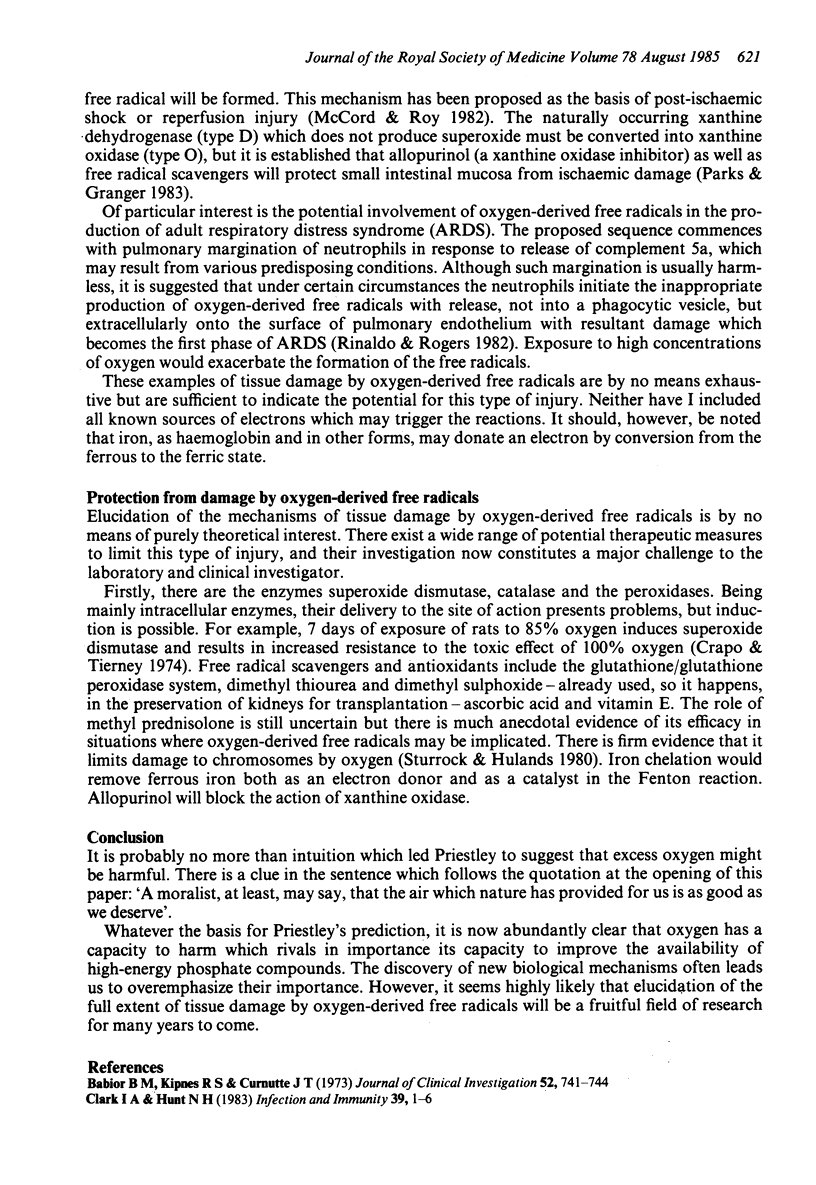Full text
PDF




Selected References
These references are in PubMed. This may not be the complete list of references from this article.
- Babior B. M., Kipnes R. S., Curnutte J. T. Biological defense mechanisms. The production by leukocytes of superoxide, a potential bactericidal agent. J Clin Invest. 1973 Mar;52(3):741–744. doi: 10.1172/JCI107236. [DOI] [PMC free article] [PubMed] [Google Scholar]
- Clark I. A., Hunt N. H. Evidence for reactive oxygen intermediates causing hemolysis and parasite death in malaria. Infect Immun. 1983 Jan;39(1):1–6. doi: 10.1128/iai.39.1.1-6.1983. [DOI] [PMC free article] [PubMed] [Google Scholar]
- Crapo J. D., Tierney D. F. Superoxide dismutase and pulmonary oxygen toxicity. Am J Physiol. 1974 Jun;226(6):1401–1407. doi: 10.1152/ajplegacy.1974.226.6.1401. [DOI] [PubMed] [Google Scholar]
- Fantone J. C., Ward P. A. Role of oxygen-derived free radicals and metabolites in leukocyte-dependent inflammatory reactions. Am J Pathol. 1982 Jun;107(3):395–418. [PMC free article] [PubMed] [Google Scholar]
- McCord J. M., Fridovich I. The reduction of cytochrome c by milk xanthine oxidase. J Biol Chem. 1968 Nov 10;243(21):5753–5760. [PubMed] [Google Scholar]
- McCord J. M., Roy R. S. The pathophysiology of superoxide: roles in inflammation and ischemia. Can J Physiol Pharmacol. 1982 Nov;60(11):1346–1352. doi: 10.1139/y82-201. [DOI] [PubMed] [Google Scholar]
- Parks D. A., Granger D. N. Ischemia-induced vascular changes: role of xanthine oxidase and hydroxyl radicals. Am J Physiol. 1983 Aug;245(2):G285–G289. doi: 10.1152/ajpgi.1983.245.2.G285. [DOI] [PubMed] [Google Scholar]
- Saugstad O. D., Hallman M., Abraham J. L., Epstein B., Cochrane C., Gluck L. Hypoxanthine and oxygen induced lung injury: a possible basic mechanism of tissue damage? Pediatr Res. 1984 Jun;18(6):501–504. doi: 10.1203/00006450-198406000-00002. [DOI] [PubMed] [Google Scholar]
- Small A. New perspectives on hyperoxic pulmonary toxicity--a review. Undersea Biomed Res. 1984 Mar;11(1):1–24. [PubMed] [Google Scholar]
- Sturrock J. E., Hulands G. H. Protective effect of steroids on cultured cells damaged by high concentrations of oxygen. Br J Anaesth. 1980 Jun;52(6):567–572. doi: 10.1093/bja/52.6.567. [DOI] [PubMed] [Google Scholar]
- Sturrock J. E., Nunn J. F. Chromosomal damage and mutations after exposure of Chinese hamster cells to high concentrations of oxygen. Mutat Res. 1978 Mar;57(1):27–33. doi: 10.1016/0027-5107(78)90231-2. [DOI] [PubMed] [Google Scholar]
- Tyler S. A., Barghoorn E. S. Occurrence of Structurally Preserved Plants in Pre-Cambrian Rocks of the Canadian Shield. Science. 1954 Apr 30;119(3096):606–608. doi: 10.1126/science.119.3096.606. [DOI] [PubMed] [Google Scholar]


